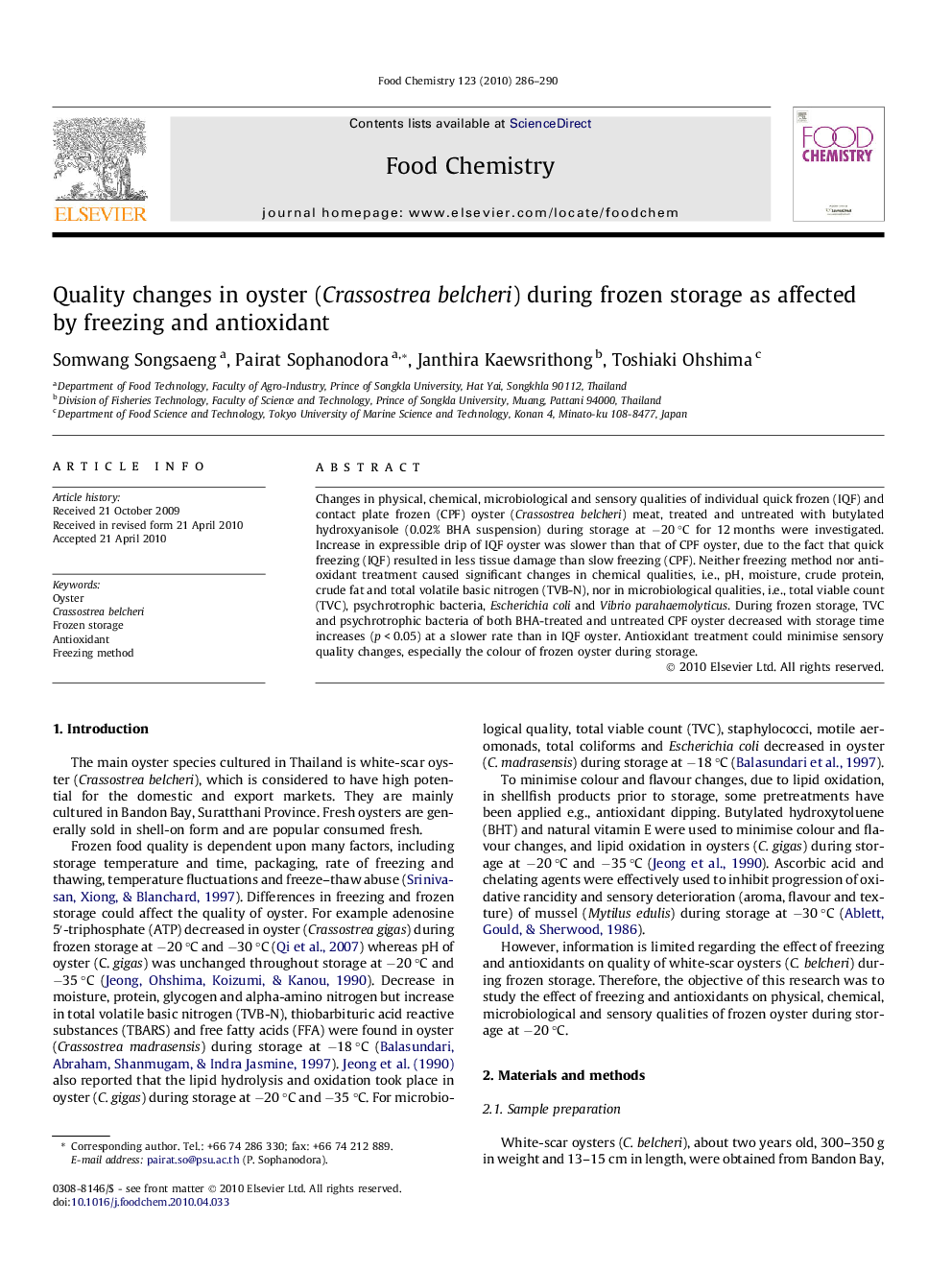| Article ID | Journal | Published Year | Pages | File Type |
|---|---|---|---|---|
| 1187840 | Food Chemistry | 2010 | 5 Pages |
Changes in physical, chemical, microbiological and sensory qualities of individual quick frozen (IQF) and contact plate frozen (CPF) oyster (Crassostrea belcheri) meat, treated and untreated with butylated hydroxyanisole (0.02% BHA suspension) during storage at −20 °C for 12 months were investigated. Increase in expressible drip of IQF oyster was slower than that of CPF oyster, due to the fact that quick freezing (IQF) resulted in less tissue damage than slow freezing (CPF). Neither freezing method nor antioxidant treatment caused significant changes in chemical qualities, i.e., pH, moisture, crude protein, crude fat and total volatile basic nitrogen (TVB-N), nor in microbiological qualities, i.e., total viable count (TVC), psychrotrophic bacteria, Escherichia coli and Vibrio parahaemolyticus. During frozen storage, TVC and psychrotrophic bacteria of both BHA-treated and untreated CPF oyster decreased with storage time increases (p < 0.05) at a slower rate than in IQF oyster. Antioxidant treatment could minimise sensory quality changes, especially the colour of frozen oyster during storage.
